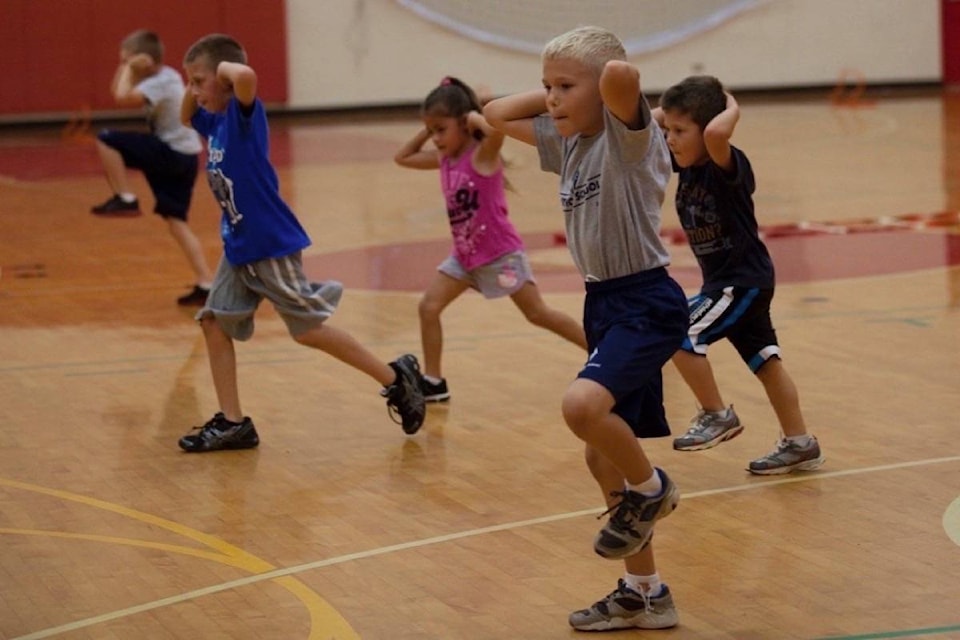What are your memories from grade school gym class?
Are they embarrassing? Mortifying? Distressing?
You’re not alone, says a study released this month in the Translational Journal of the American College of Sports Medicine.
The study, appropriately titled “My Best Memory Is When I Was Done with It,” spurred on social media chatter – and often painful reminiscing – when it was highlighted in a New York Times story last week.
Adults who vividly remembered terrible gym classes are much less likely to be active today.
“We really need to talk about how horrible P.E. is for many students,” tweeted Vancouver school trustee Patti Bacchus following the Times story.
“[It’s] humiliating for some, unpleasant for others who just don’t enjoy group or team sports, anxiety-provoking for self-conscious teens who have to change in front of peers.”
We really need to talk about how horrible PE is for many students. | “The most consistent associations were between unpleasant memories of P.E. classes and lingering resistance to exercise years later” #bced https://t.co/HZltqEmrt3
— Patti Bacchus (@pattibacchus) August 26, 2018
Bacchus’ tweet ignited a storm of others from supporters and detractors alike.
“I hated P.E. Yelling teachers and an emphasis on sports vs. actual physical literacy really messed me up,” tweeted Ian Patton.
“Luckily, I got active in later adulthood, but I still struggle with imposter syndrome when doing anything athletic. I feel I don’t belong.”
Rhiannon Vining felt differently.
“The only problem with this logic would be every student has a weakness. You can’t fear your weakness. That will just make you a weak individual,” she wrote.
“They can’t have 1,500 students per high school with customized schedules just because they are not feeling ‘comfortable’ in every class.”
I was berated and fat shamed by PE teachers in school (elementary and secondary). No part of PE taught me to enjoy moving my body, just that it was my enemy. https://t.co/F62bnZeZzN
— Erin (@erinltoth) August 27, 2018
Sean Juteau, Surrey school district’s athletic coordinator and a “helping teacher” for physical and health education teachers, said the point of physical education classes is to help kids become active adults.
Otherwise, he said, it’s not working.
“What we’re trying to do is figure out what activities each of these students will take part in that will help them engage in physical activity for life,” said Juteau.
“We try to take the focus off isolating students or putting individuals on the spot. We really try and focus on how we can building confidence in their fundamental movement skills.”
Juteau, who frequently meets with Surrey’s physical education teachers, said they’re trying to answer one question: How do we create people who want to pursue a healthy lifestyle?
READ MORE: Report sets exercise guidelines for young kids, including ‘tummy time’ for babies
A big part of that is introducing kids, especially those who may not enjoy or excel in traditional sports like soccer or basketball, to more outside-the-box activities.
“We help students build their own game plan and track their own success in that particular chosen activity,” said Juteau.
“And they learn that, ‘Maybe yoga isn’t for me, but it’s made me try pilates instead.’”
Many of those changes are part of a new “hands-on” curriculum introduced by the B.C. government in 2015, according to Stephen Berg, an associate professor and the director of professional development programs and summer institute at UBC’s Okanagan campus.
Berg said he likes the new label of “physical education” classes instead of the traditional “gym” class.
“As soon as we label it gym class, we’re only doing activities in the gymnasium,” he said. “And not every child is going to enjoy playing a game of basketball in P.E.”
He pointed to a recently installed paddlesports centre on Okanagan Lake.
“There’s standup paddleboarding, kayaking and canoeing. If we get kids to experience those when they’re children, that can really spark an interest for life.”
But although Berg believes the curriculum has improved and that teachers are trying, he thinks there needs to be more institutional change.
“I don’t see or hear of a lot of professional development activities related to physical education,” Berg said.
“More often than not, we hear about the literacy and numeracy…. being prioritized, but physical and health education are seen as the outlier subject areas.”
Too often, Berg said he hears “Oh, we won’t go to P.E. today, we have too many important things to do.’”
He’d like to see schools rated on their physical and health education, and for post-secondary institutions to make that a requirement for entry.
“Once we start seeing a shift in that mindset from officials… then maybe we’ll see making physical education mandatory from K-12.”
Like us on Facebook and follow us on Twitter.
